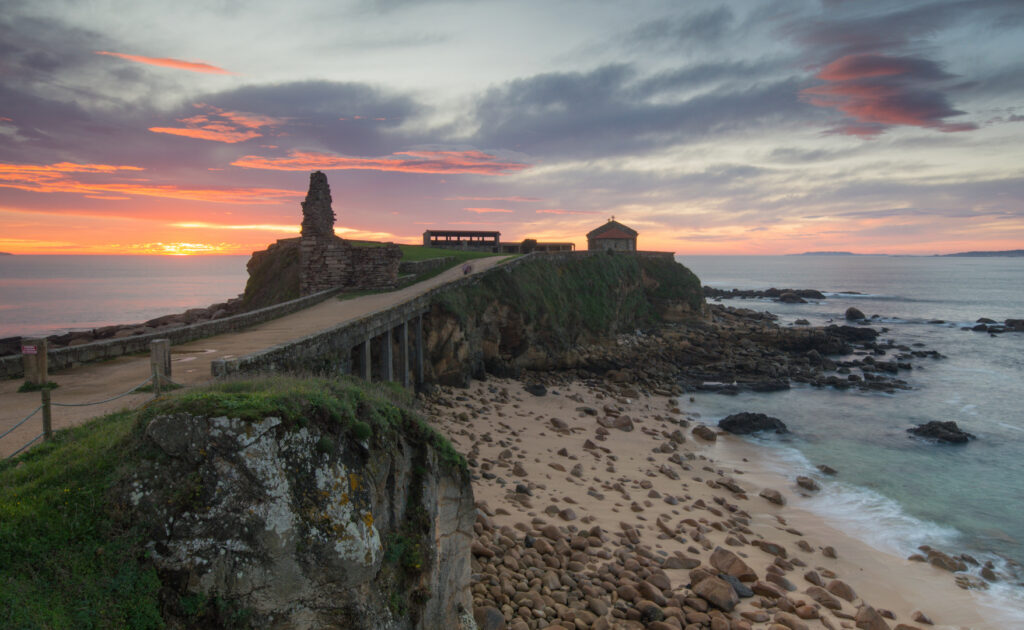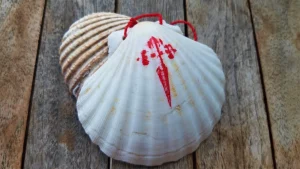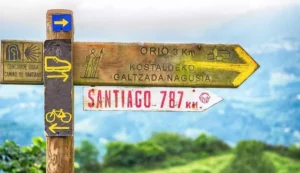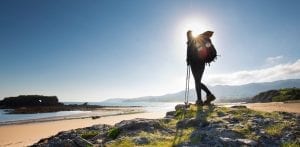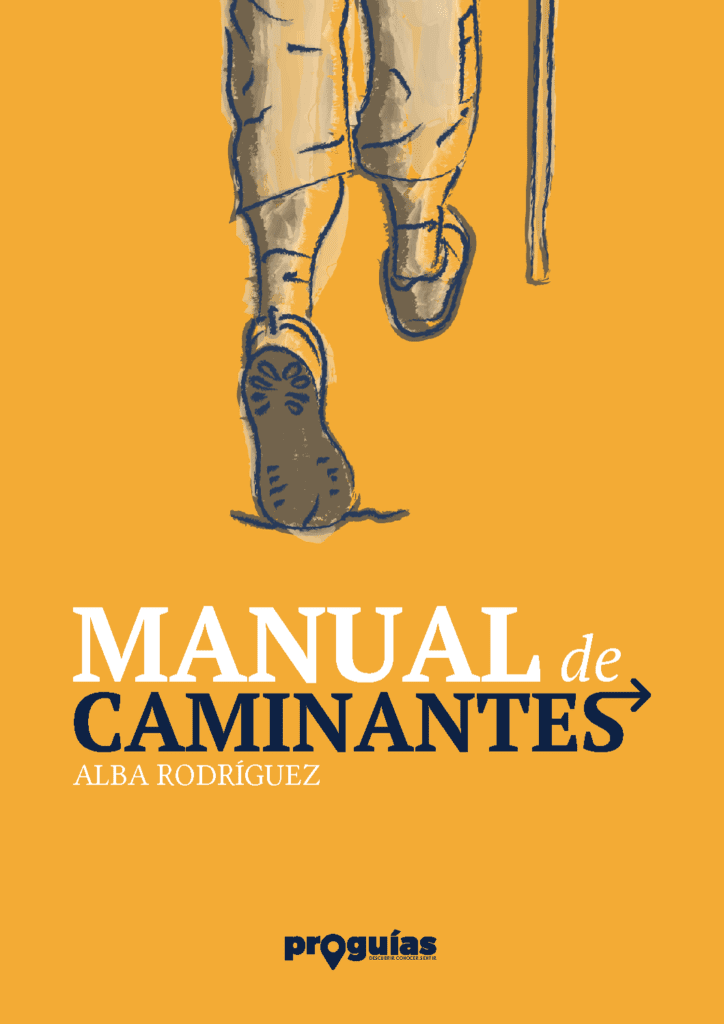The route of Padre Sarmiento takes us through vineyards, valleys and rivers and will allow us to explore the estuaries of Pontevedra and Arousa. Discover places full of history, nature and landscape that will be worthy of being captured in the best photos and treasured in your memories. The Route of Padre Sarmiento is a journey through the natural region of O Salnés, along the sea, with a unique combination of coastal landscapes and fishing villages and with an incredible gastronomy and oenology. Do you want to discover it with us? Keep on reading.
Who gives the name to the Ruta del Padre Sarmiento?
Before we start talking about the route itself, it is important to understand the history that has shaped it. Who was Padre Sarmiento and why is there a route named after him?
Father Sarmiento, whose real name was Pedro José García Balboa, was probably born in Villafranca del Bierzo in the last years of the 17th century. Specifically in 1695. However, his family would soon move to live in Pontevedra, when he was a baby. So the future humanist would grow up in Pontevedra, entering the Benedictine order at a very young age and studying Arts and Philosophy in the neighbouring monastery of San Salvador de Lérez. During this period he changed his first name from Pedro to Martín and took his mother's second surname: Sarmiento.
Under that name, Martín Sarmiento, the friar continued his studies at the great monastery of Irache (on the French Way) and at the University of Salamanca, where he acquired knowledge in Theology. Father Sarmiento's work focused notably on the Romance languages, with a special interest in Galician (which at that time was going through a period of decline known as the dark centuries), but also in botany and medicine.
Origin of the Route of Padre Sarmiento
In 1745, he began a journey on foot from Pontevedra to Santiago de Compostela, documented in his valuable journal Trip to Galicia. A pilgrimage from Pontevedra to Santiago de Compostela that would allow him to earn the jubilee according to the rules of the time. According to his own texts: "On 19 July 1745 I set off from Pontevedra to Santiago, rounding the whole of O Salnés. I began my journey reflecting in these pages the great beauty of my land. I wanted to relive the essence of the beautiful places I had walked through. So that, on my return to Madrid, I could remember them forever.".
More than 270 years later, the route initiated by Father Sarmiento has been recovered by the Mancomunidad de O Salnés as an alternative to the Camino de Santiago. And this allows us to discover new landscapes in an incomparable environment that alternates inland and coast and that provides those who walk it with one of those experiences that deserve to be lived.

Difficulty level and best time of year to do the route
The route of Padre Sarmiento is not a particularly tough itinerary. On the contrary, it seems to have been designed by Father Sarmiento himself so that you can enjoy it and discover the attractions of each village and each area. Moreover, as it runs very close to the sea, you will not face any major ascents or descents during the stages. It will be a fundamentally flat route or with very progressive ascents and descents.
The best times of the year to do the Ruta del Padre Sarmiento are spring and autumn, with no great surprises. As, in addition, several of the localities that the route crosses are nowadays areas of great tourist attraction, avoiding the summer allows us to enjoy it with more tranquility. Does this mean that it should not be done in summer? Of course not. But you should bear in mind that accommodation fills up quickly (it is advisable to book months in advance) and prices will be higher.
On the other hand, if you like green landscapes and seeing the vineyards in leaf, spring is your time. If you prefer to see the fruit and the time of the grape harvest, then we recommend the month of September, when many winemakers in the area begin to harvest the white grapes that will give rise to the famous albariño wine under the Rías Baixas designation of origin.
The itinerary
As with the different routes of the Camino de Santiago, the route of Padre Sarmiento is also very flexible. This means that it can be easily adapted to almost any circumstances, lengthening or shortening stages as appropriate.
However, traditionally it was considered a division into 9 stages, which gives a total of 11 days including the day of arrival in Pontevedra and the day of return home after arriving the previous evening in Santiago and spending the night.
Among our programmes Route of Father SarmientoHowever, we have opted for a slightly different division, creating a programme that follows the original route with all its characteristic attractions but that, being less days, is more manageable for any pilgrim. What we propose is to combine history, art, nature and gastronomy to achieve the most attractive route possible.
This route starts in Pontevedra and ends in Santiago de Compostela, like all the Caminos de Santiago. It will take you through some of the best-known towns and villages of the Rías Baixas, such as Combarro, Sanxenxo, O Grove and Cambados. All of these areas have a great fishing and wine-growing tradition, as the route often passes through vineyards.
Another notable feature is that the route is perfectly signposted. However, bear in mind that the signs are different from those of the Camino de Santiago: on this route you will not find the typical scallop shell that identifies the Camino. Instead you will find blue signs with the traditional yellow arrow, a silhouette and the cross of Santiago.
Finally, the last stretch of the Ruta del Padre Sarmiento overlaps with the Portuguese Way. That is, when you reach Pontecesures and cross the bridge towards Padrón, you will notice an increase in the number of pilgrims; and you will also notice the change of signage, which from here is the traditional one of the Camino de Santiago.
The stages of the Route of Father Sarmiento
Below you will find the traditional stages of the Route of Padre Sarmiento. Remember that here you can see the division in 6 stages that we propose to you to do it in less days and in a more affordable way. However, if you want to do it in 9 days, just let us know by contacting us.
1. Stage Pontevedra - Sanxenxo (25 km)
You will start your Padre Sarmiento route crossing the bridge of O Burgo in Pontevedra, and the coastline of the estuary itself will guide you through this stage. Throughout this stage we recommend that you make two stops before reaching your destination, one in Poio and the other in Combarro. It is best to leave early in the morning to enjoy all its charm.
In Poio, the beautiful monastery of San Xoán awaits you, which we recommend you stop to visit. There you will see one of the granaries (granaries) in Galicia. In Combarro, symbol of the perfect union between the sea and the granite land, you will walk among its houses, granaries and cruceiros (granaries). A perfect place to make a stop on the Way and taste its local products. The route continues along a coastline full of coves, inlets and majestic corners as you walk towards Sanxenxo.
2. Stage Sanxenxo - O Grove (20 km)
You will start the stage crossing Sanxenxo and heading towards Portonovo, another of the most popular beach resorts in Galicia. From there, you will leave the urban atmosphere of the beaches and enter a more natural environment, where nature and the coast are the protagonists.
In this stage you will enjoy such emblematic places as the hermitage of A Lanzada and its beach with its dune ecosystem or the tower that the Meiriños built to protect Compostela.
3. Circular stage O Grove (29 km)
This stage of the Route of Padre Sarmiento is optional, as it is a circular route, to get to know the island of O Grove and La Toxa in depth.
The tour will take you to the centre of the village which will show you some of its best secrets, as well as impressive views of the island of Sálvora, archaeological sites, lagoons and an open-air museum, are some of its treasures. In the Port of O Grove you can take a boat to enjoy a tour among the rafts and taste the famous mussels of the estuary.
You will then continue on to the island of Toxa, famous for its thermal waters, where you can buy the famous soap. Take the opportunity to treat yourself to a thermal treatment at the island's resorts, but don't forget to visit the church of San Caralampio, famous for being entirely covered in scallop shells. Before finishing the stage you will have magnificent views of the Arousa estuary from the viewpoint of Monte Siradella.
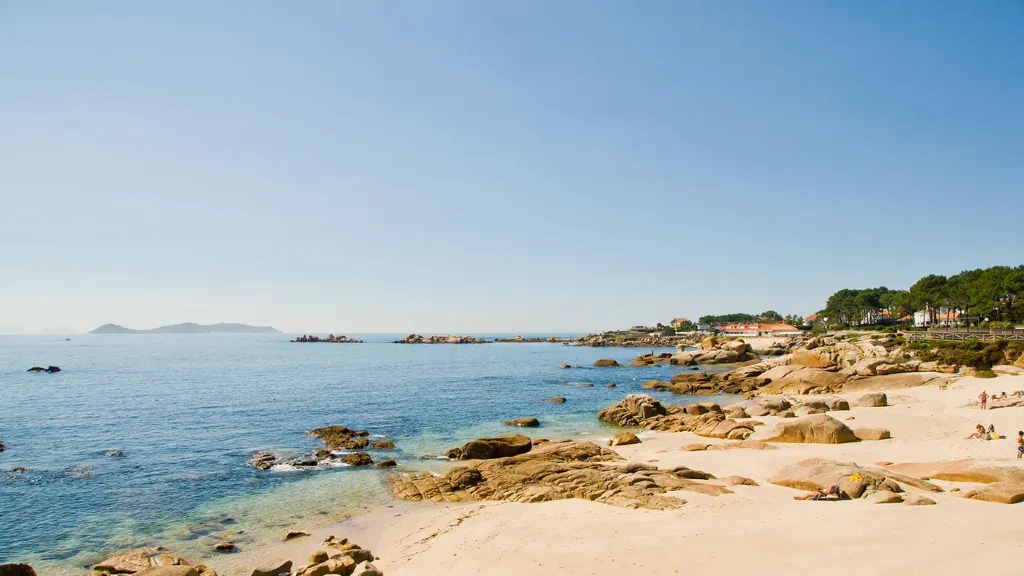
4. Stage O Grove - Cambados (22,5 km)
You will start the stage walking among marshes and vineyards that will indicate that you are approaching Cambados, the capital of the famous Albariño wine. On your arrival in Cambados, the fishing quarter of Santo Tomé awaits you, with its old charm and shell-lined streets, as well as the pazo of Feniñáns. A village that once fought against Norman and Viking invaders.
5. Stage Cambados - Illa de Arousa (18.2 km)
On this stage of the Padre Sarmiento Route you will start among vineyards. You will soon come across a tidal mill, one of the few that uses seawater, which will impress you with its unique architecture. You will continue your route along the coast until you reach the 2km long bridge that leads you to the island of Arousa. Tasting fish and enjoying the sea is a must on this stretch of the route. You can head for its fishing port, O Xufre, and the lighthouse that alerts sailors to the proximity of the island.
If you still have the energy, there is a beautiful route through the Cons, large granite boulders eroded by wind and waves over thousands of years. It's also a good time to visit the preservation museum.
6. Stage Illa de Arousa - Vilanova de Arousa (16,8km)
As you are on an island, you will have to cross the bridge again to start the route through the Carreiron natural park, which is a feast for the eyes, not only for its beaches with crystal clear water and fine white sand, but also for being an area of special interest for birdwatching.
The stage ends in the birthplace of Ramón del Valle-Inclán, where you can learn about his history through a visit to the house-museum. In Vilanova de Arousa the Route of Father Sarmiento meets the Spiritual Variant, so it is possible that you will find new pilgrims on your Camino to Santiago.
7. Stage Vilanova de Arousa - Vilagarcía de Arousa (12km)
Start the stage by heading to the fishing village of Vilaxoán and continue towards Vilagarcía de Arousa, passing through the Enrique Valdés Bermejo botanical park. Don't miss the opportunity to visit the Vista Alegre manor house and the convent, which form an architectural ensemble of great historical and artistic value.
Our recommendation is that you do the whole route close to the sea, you will find cafes located on the sea where you can stop to recharge your batteries and continue, along a more urban stretch, towards Carril. And, why not, enjoy some good clams. From Carril you can see the island of Cortegada, famous for having the largest laurel forest in Europe, with trees over 10 metres high.
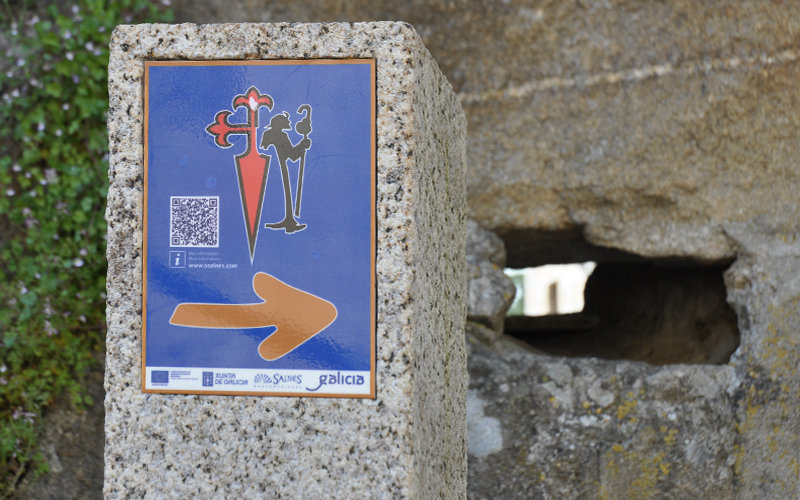
8. Stage Vilagarcía de Arousa - Padrón (25,6km)
This stage of the Ruta del Padre Sarmiento runs through wooded and marshy countryside towards Catoira. The Arousa estuary meets the river Ulla, creating a natural border that separates the provinces of Pontevedra and A Coruña. In Catoira you will discover the Torres del Oeste, defensive towers of Santiago de Compostela.
You will continue the Camino towards Padrón, the place where the boat carrying the remains of the Apostle Santiago arrived, and the birthplace of the poet Rosalía de Castro. This is the end of the stretch where the route of Padre Sarmiento differs from the Portuguese Way, so in your last stage you will notice an increase in the number of pilgrims who follow the more usual route, from Caldas de Reis.
9. Stage Padrón - Santiago (23,3km)
You will begin by passing through small villages, always ascending moderately, you will reach Santiago passing through Iria Flavia, where the bishopric of Teodomiro was located at the time of the discovery of the tomb of the apostle. You will also pass through O Milladoiro, which today functions as a dormitory town for the capital of Galicia.
Keep walking, just as Fray Sarmiento did in 1745, and you will enter the city from the south, through the Porta Faxeira of the old wall and the Rúa do Franco. Congratulations, pilgrim! You have reached your goal. The journey continues.
If you want to get more information about the Route of Padre Sarmiento, you can download this official brochure with detailed information on each of the stages.


